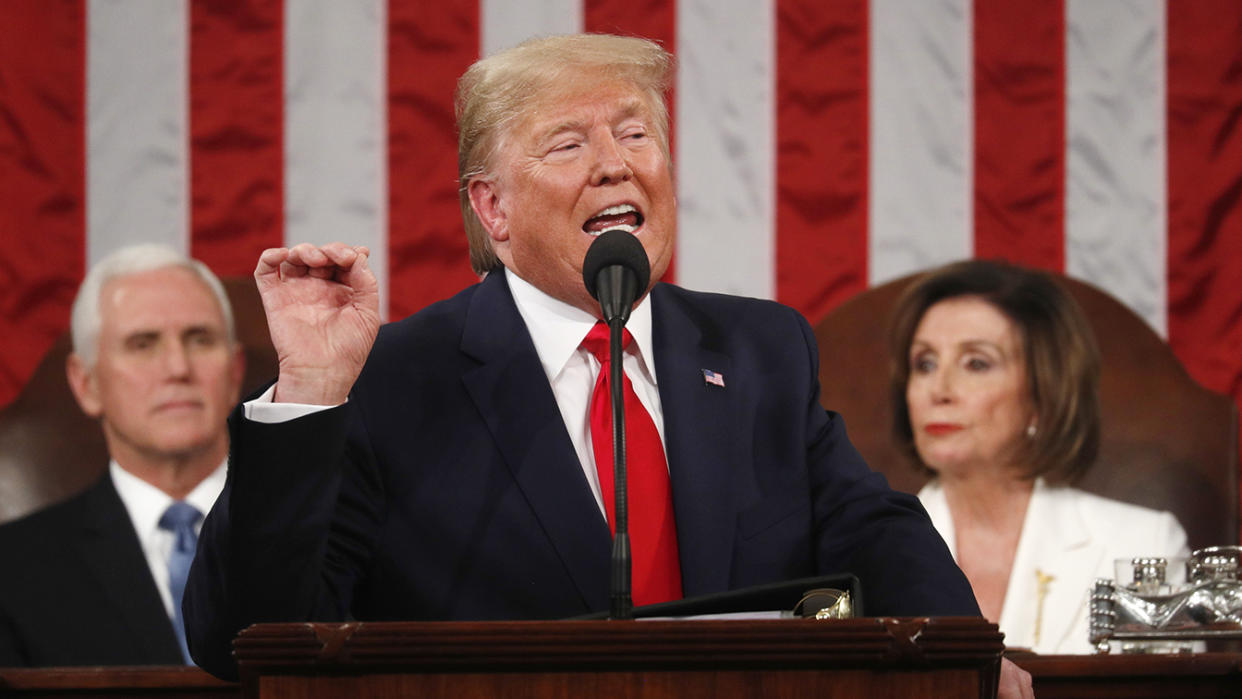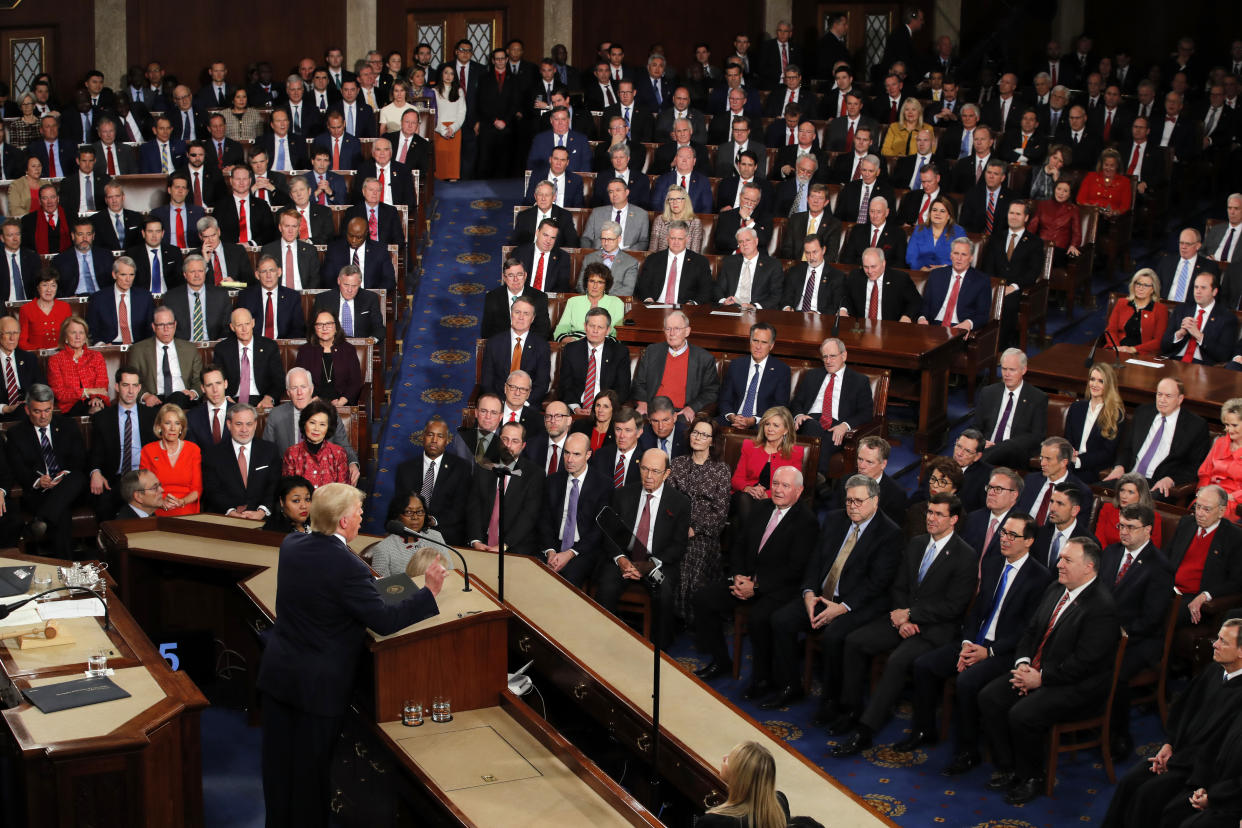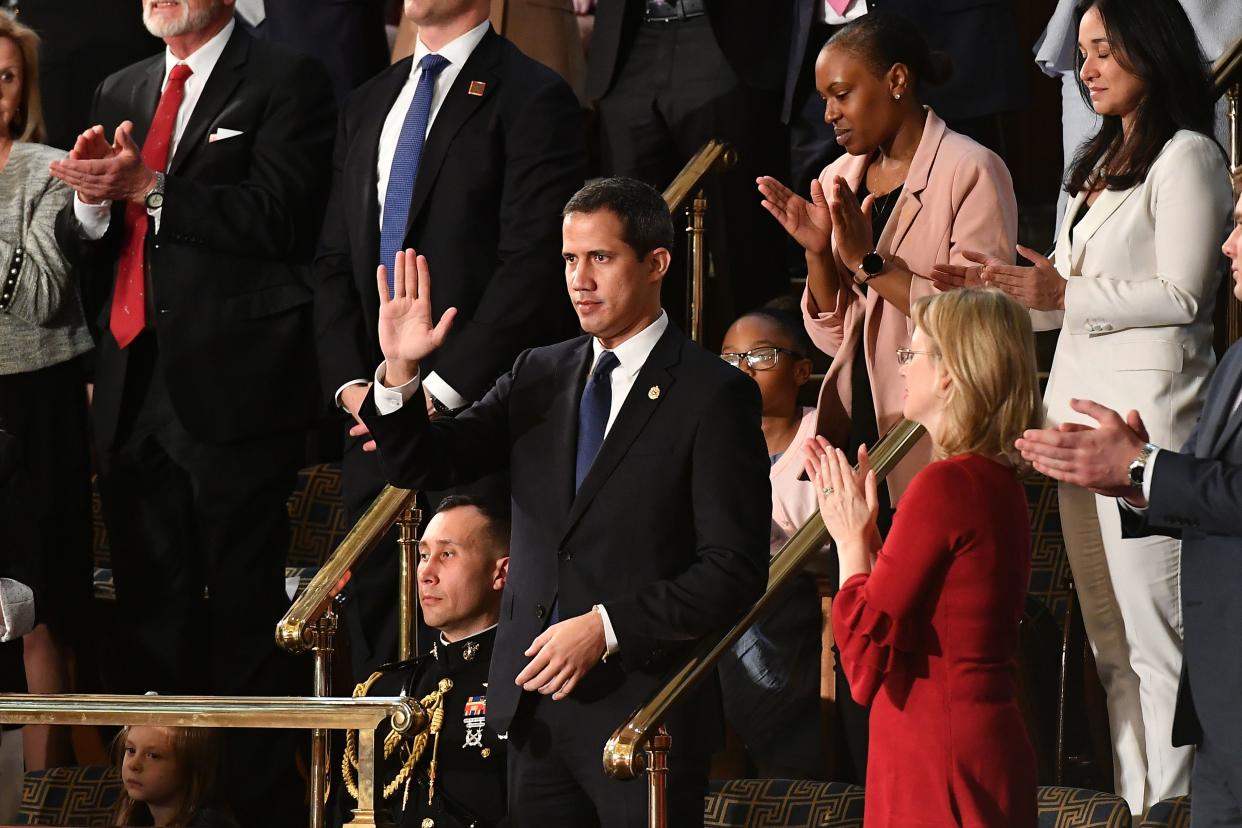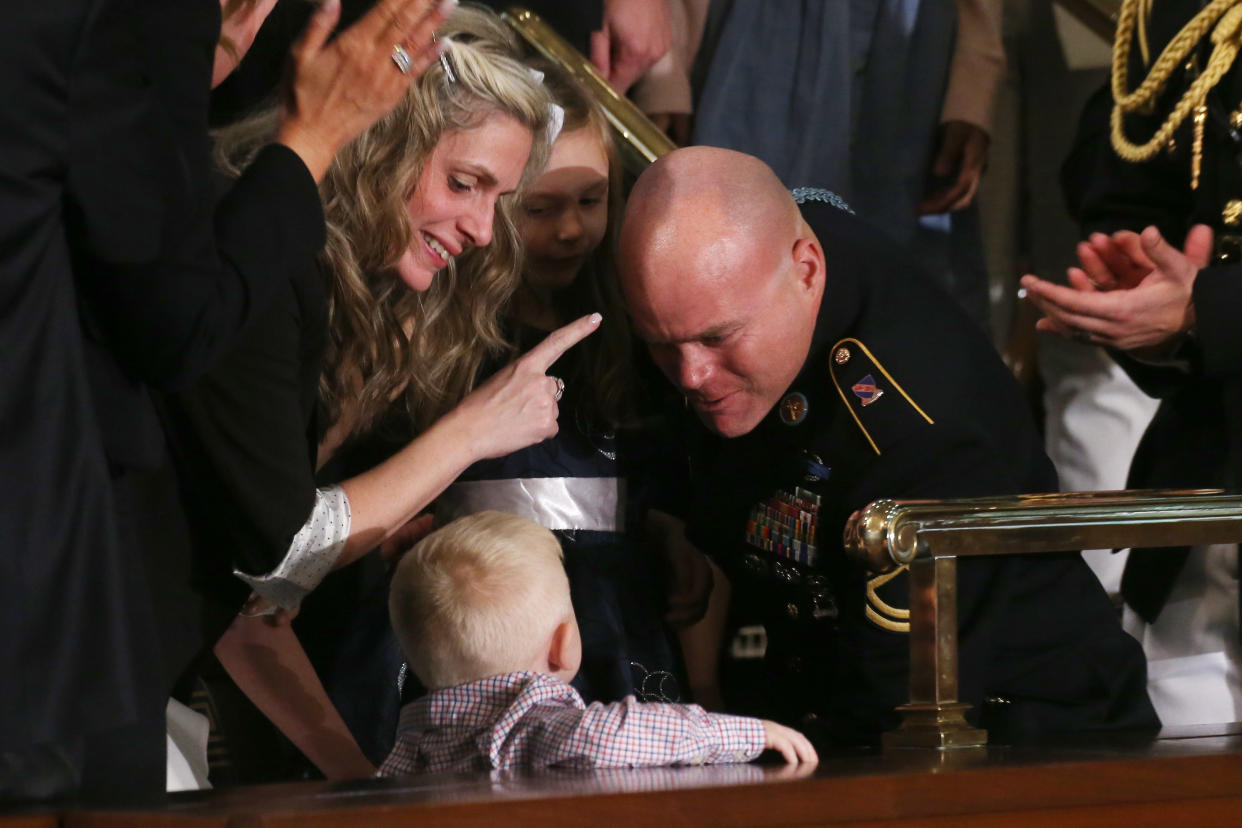Trump's State of the Union address: The top takeaways
WASHINGTON — On Tuesday, President Trump delivered what could be his last State of the Union address—or merely the last of his first term. That will depend, of course, on whether Trump is reelected in November.
Accordingly, Trump used the address to celebrate his record. Republicans were happy to comply, heartily cheering Trump at every turn. Democrats, for the most part sat silently.
Here are the key takeaways from Trump’s address.

1. An era of bipartisanship is not in Washington’s future
As divided as Washington has been in recent years, it has perhaps never been as divided as it is today. The president has just been impeached, and he is entering a reelection contest that could be the most divisive in American history.
Neither side made meaningful efforts at the famed practice of aisle-crossing, which is more frequently invoked than practiced in Washington, at least these days.
Political divisions were apparent from the very start. Most of the female Democrats in the House wore all-white outfits that have come to serve as a rebuke of Trump. A few progressives, including Rep. Rashida Tlaib of Michigan and Rep. Ilhan Omar of Minnesota, did not rise when Trump entered the chamber. A few others, including Rep. Alexandria Ocasio-Cortez of New York and Rep. Ayanna Pressley of Massachusetts, stayed away from the speech altogether.
As Trump took his place at the podium, he pointedly refused to shake hands with House Speaker Nancy Pelosi, who had just presided over his impeachment in the House.

She returned the favor about an hour and a half later. As Trump finished his address, Pelosi tore up a printed version of his speech, providing what is bound to be the night’s most viral moment. She had similarly provided the most viral moment from the previous year’s address with her theatrically condescending clap.
As for the speech itself, it was met by a Democratic Party that for the most part sat glumly, only rarely joining the frequent standing ovations by Republicans. The only policy-related line that received truly bipartisan applause was a promise to rebuild the nation’s infrastructure.
Trump made similar promises when he first started running for president almost five years ago. But despite a number of Infrastructure Weeks, the nation’s infrastructure remains well short of greatness.
2. America is great again

As Democrats were still processing the late returns from the Iowa caucuses, Trump opened the speech with a recitation of his own accomplishments, particularly those related to the economy.
“Three years ago,” he began, “we launched the great American comeback.” He continued by saying that “jobs are booming, incomes are soaring, poverty is plummeting, crime is falling, confidence is surging, and our country is thriving and highly respected again.”
In other words, mission accomplished, according to Trump. His argument has been—and will almost surely continue to be—that it would be folly to place the nation into the hands of Democrats, whom he has depicted as radical leftists.
Overall, the speech was celebratory and retrospective: on the economy, national security, immigration and much else.
No major new policies were introduced, in seeming recognition that an election year in a divided country was not going to be a time of significant accomplishment.
3. Socialism is not great

Among Trump’s guests was Venezuelan opposition leader Juan Guaidó, who a year ago declared himself the true leader of the South American nation, even as Nicolás Maduro, the head of the Socialist Party there, has continued to cling to power in Caracas.
Calling attention to Guaidó’s presence was also a way to call attention to the supposed threat from socialists, which has become a rhetorical weapon deployed against opponents like Sen. Bernie Sanders, a leading contender for the Democratic nomination for president and a self-described democratic socialist.
“Socialism destroys nations,” Trump said.
Later, he returned to the same theme, warning that Democrats were planning “a socialist takeover of our health care system, wiping out the private health insurance plans of 180 million Americans,” in what appeared to be a reference to the Medicare-for-all plan first introduced by Sanders and now endorsed by many other Democrats.
“I want you to know,” Trump went on, that “we will never let socialism destroy American health care.”
He also combined his critique of progressive health care proposals with his restrictive view of immigration, taking shots at state-level policies and proposals to provide some measure of health care coverage to undocumented immigrants.
“If forcing American taxpayers to provide unlimited free health care to illegal aliens sounds fair to you, then stand with the radical left,” he said.
That portion of the speech received the strongest negative response from Democrats, including from many who are not supporters of the most left-leaning health care plans.
4. What impeachment?

Impeachment was not mentioned in the full text of Trump’s remarks, but the president is known to treat prepared remarks with disdain.
Ahead of the address, Republicans were desperately hoping that he would stick to the script this time around, in particular by not mentioning impeachment. If he didn’t talk about it, after all, they might also avoid having to do so on Tuesday night.
Trump complied. Impeachment was neither explicitly mentioned nor implicitly referenced.
To be sure, there will be plenty of time for that in the days to come, for both the president and his detractors. But in managing to avoid the topic in his State of the Union address, Trump gave himself—and his party—a reprieve from months of grinding debate over Ukraine, obstructing Congress and budgetary holds.
5. The return of Rush

Back when the Republicans took control of the House of Representatives in 1994, the conservative talk show host Rush Limbaugh was made an honorary member of the incoming GOP conference, a recognition of the growing power of conservative media,
In the years since, Limbaugh has continued to be one of the most divisive figures in American media, attacking virtually every concept sacred to the political left, from feminism to climate science.
On Tuesday, he sat next to first lady Melania Trump as a guest of the president. The occasion was not an entirely happy one because Limbaugh had only a day before announced that he was battling advanced lung cancer. The revelation apparently prompted the last-minute invitation from Trump.
Trump called him “the greatest fighter and winner you will ever meet.” The line was met with a standing ovation from Republicans. Democrats remained seated, with impeachment manager Rep. Sylvia Garcia of Texas covering a yawn.
Trump then had the first lady present the ailing radio host with the Presidential Medal of Freedom, which she draped over his neck. It was a notable departure from the normal method of awarding the honor, which is normally done in a White House ceremony.
The usually gruff Limbaugh was visibly moved. Democrats were not.
6. And now back to your scheduled programming; i.e., impeachment

On Tuesday night, Trump basked in the glow of Republican adulation as he enumerated his own accomplishments.
Wednesday, however, will see the Senate vote on the two articles of impeachment that have been exhibited in the chamber by House Democrats.
Trump is expected to be acquitted, and he will almost certainly celebrate that acquittal on Twitter and at political rallies. But the vote on Wednesday will have the effect of supplanting the State of the Union address in the public consciousness.
7. There was a (feel-good) surprise

A student of television theatrics, Trump concluded the evening with a dramatic flair that any American could cheer. Among his guests was Amy Williams of Fort Bragg, N.C., who was there with her two young children. Trump surprised Williams by announcing that her husband, Sgt. 1st Class Townsend Williams, was returning from his military deployment.
Sgt. Williams entered the chamber and made his way down a few stairs toward where his wife was sitting next to the first lady. He first embraced his 6-year-old daughter, then his 3-year-old son and, holding him, hugged his wife as the entire chamber cheered.
It was a sweet moment, a much-needed break from bitter political combat. There will be plenty of time for that in the days to come.
_____
Read more from Yahoo News:

